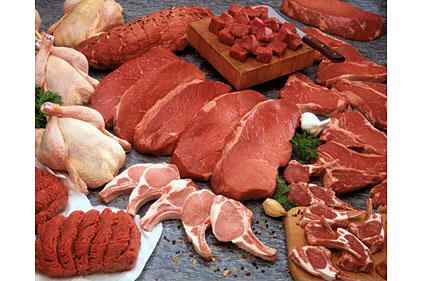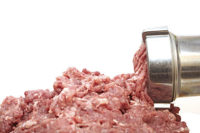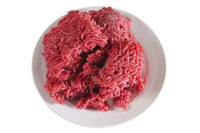 Whether or not the August 2013 proposed rule to mandate prominent labeling of raw “mechanically tenderized” beef is implemented by USDA-FSIS, producers of non-intact raw beef products (including ground) need to consider the raw materials used when assessing their food-safety system. This means establishments purchasing raw beef for non-intact use must know what actions the supplier has taken, and, based on that information, consider the potential hazards in their hazard analysis.
Whether or not the August 2013 proposed rule to mandate prominent labeling of raw “mechanically tenderized” beef is implemented by USDA-FSIS, producers of non-intact raw beef products (including ground) need to consider the raw materials used when assessing their food-safety system. This means establishments purchasing raw beef for non-intact use must know what actions the supplier has taken, and, based on that information, consider the potential hazards in their hazard analysis.
Whether the raw beef products have been harvested under a HACCP system with at least one CCP to control shiga toxin-producing E. coli (STEC). This should be available from every slaughter establishment; many of whom provide this information on-line. Indeed, FSIS expects the purchaser should obtain assurances that the supplier has a HACCP plan with a CCP to address STEC.
Whether the raw materials are tested. As an initial matter, the supplier’s intended use will govern whether the product has been tested. However, unless the product comes with a certificate of analysis, the purchaser may not know the supplier’s intended use and thus whether the product has been tested or not. Due to agency restrictions, a statement that product is “not tested” will not appear on the label. So the purchasing establishment needs to affirmatively confirm whether specific products were tested. This can be done by contacting the supplier or by checking the supplier’s Web site. Most suppliers address which products are tested in their “intended use letter.” FSIS Directive 10,010.1 indicates that letters to receiving establishments would be an appropriate means for the supplying establishment to designate the “intended use.”
When receiving untested raw materials that the purchaser intends to process into non-intact products, the purchaser needs to address this in its own hazard analysis. In this regard, FSIS Directive 10,010.1 provides guidance on actions a receiving establishment can consider.
If the purchaser generates bench trim as part of the process, it could send the trim to cook to avoid implicating non-intact subprimals by testing the trim and having a positive STEC finding.
Whether the supplier has a program to address “high events.” As part of its testing program, the supplier should address “high events.” “High events” are when the slaughter establishment has positive STEC findings above the expected level. When this occurs, the conditions in the establishment may have resulted in the contamination of other parts of the carcass, including, but not limited to primals, and call into question the negative trim test results. Since a high event program may be developed from company-generated data, most suppliers will not share the specifics of such program with its customers. The specifics are not essential — what the purchaser needs to know is that all its suppliers have a high event program and follow it. Most slaughter establishments now mention the presence of a high event program in their letter of guarantee/food safety letters. A purchaser would be well advised to verify that the supplier has a high event program, especially if buying untested intact products.
Moving forward, regardless of whether or how FSIS finalizes some form of labeling based on the proposed rule, you can still be a part of the solution that really works — an effective food-safety system which includes consideration of your raw materials.





Report Abusive Comment